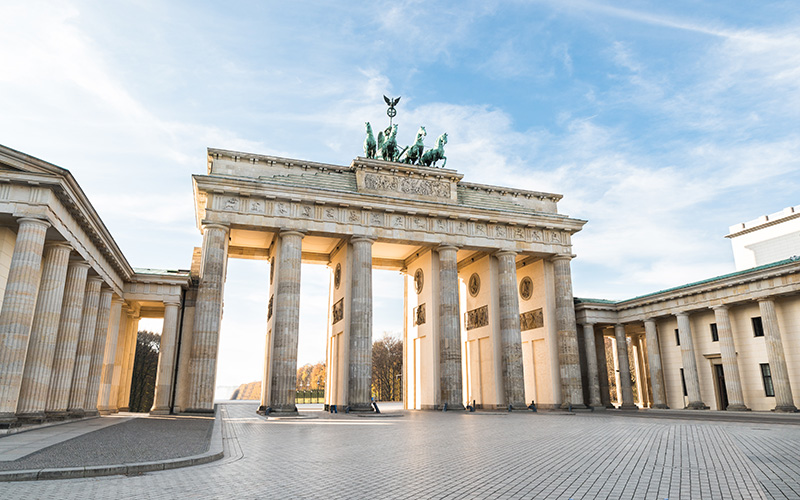

Renting a car in Germany: Complete guide for 2025
Renting a car in Germany—freedom hums through autobahn winds, where castles blink past and every curve whispers stories older than roads.
You’ve mapped out the trip, booked the stays—but something’s still bugging you. Is renting a car in Germany worth it? From license rules to unexpected fees and that mythical autobahn freedom, we’ll break it all down. Here’s what you need to know before grabbing the keys and rolling out.
This article contains affiliate links.

Should you rent a car in Germany?
Thinking about your Germany trip and wondering if renting a car makes sense? It’s a solid option, but it depends on your plan. On one hand, the Autobahn beckons, countryside charm awaits, and independence is powerful. On the other hand, rental costs, insurance quirks, and tight urban parking can complicate things. Let’s weigh it all up.
Pros
- Flexibility to explore off‑beat towns, scenic drives, and rural gems at your own pace
- Access to a driving enthusiast’s dream ride on the famous Autobahn—no speed limit stretches included
- Often nicer vehicles for reasonable prices—Sixt is frequently praised for its good selection
Cons
- Insurance extras, damage liability holds, and tricky return fees can sting
- Renting at airports or stations may incur added surcharges
- Some travelers report unexpected charges for minor damages and confusion about whether an International Driving Permit (IDP) is required
Where to find a cheap car rental in Germany?
Hunting for the best deal on a rental car in Germany? You’ll find big price swings—even for the same model. That’s where smart comparison tools earn their keep. Instead of juggling multiple sites, use Visitteo, which lines up prices from major providers in one shot—same car, different prices, all in one place.
Visitteo
You know how the same rental car can show up with five different prices depending on where you look? That’s where Visitteo shines. It pulls rates from all the major providers, so instead of clicking through a dozen tabs, you see the full picture in one spot. The same car, different prices. Easy, fast, no second-guessing. If you like smart shortcuts that save real money, Visitteo’s the top choice.
Discover Cars
If you’re looking for a travel hack, consider Discover Cars. It compares real deals from well-known brands and shows you upfront what you’re paying—no shady fees hidden in fine print. You can filter by car type, provider, or rating, and even score free cancellation on many options. Perfect for anyone who wants to book fast, stay flexible, and feel confident the deal’s as good as it looks.
EconomyBookings
Trying to save on your trip? EconomyBookings brings together offers from tons of car rental companies across Germany. Whether you need a tiny ride for city streets or a van for the whole crew, they’ve got you. The site’s clean, booking is simple, and you’ll often find lower prices than the big-name sites. Just be sure to scan the insurance options—some deals look great until you hit the checkout page.
Requirements for renting a car in Germany
Here’s what you’ll need to rent a car in Germany—broken down without the boring bits:
- Age Requirements: Most rental companies will hand over the keys if you’re at least 21, though some accept drivers as young as 18 or 19. Just a heads-up: if you’re under 25, expect a daily “young driver” fee. It’s pretty standard.
- Driver’s License: You’ll need a valid license you’ve held for at least one year. Some rental agencies might ask for two years of driving history, especially for higher-end vehicles.
- International Driving Permit (IDP): If your license isn’t in Roman characters (like English or German), you’ll almost always need an IDP. Even if it is, companies often require one if you’re from outside the EU, especially U.S., Canadian, or Australian travelers.
- Passport or ID: Bring your passport or national ID. You’ll need it to verify your identity at pick-up.
- Credit Card: A credit card in the main driver’s name is non-negotiable. It’s used to hold the security deposit. Debit or prepaid cards usually won’t cut it.
- Insurance: Basic liability coverage is legally included. But seriously, consider adding a collision damage waiver or theft protection. Either get it through the rental agency or your travel insurance.
What type of car should I rent in Germany?
Bavaria isn’t just a postcard-perfect region—it’s also a playground for drivers. With its alpine switchbacks and mountain passes, you’ll want a car that can hold its own. Something like a compact SUV or a sporty sedan—say, a Volkswagen Tiguan or Audi A4—gives you confidence and control on those winding routes through Garmisch or the Berchtesgaden Alps.
Over in Berlin or Hamburg, though, you’re in a different driving world entirely. City traffic, narrow streets, and tight parking spots can turn a big car into a headache. This is where a small, nimble ride like a VW Polo or a Fiat 500 really shines. You’ll slip through traffic and squeeze into spots without breaking a sweat.
If you’re cruising through the Black Forest, comfort and fuel efficiency become your best friends. That region’s all about long, scenic stretches dotted with hidden villages and forested roads. A hybrid or a diesel car will save you on fuel while keeping the ride smooth and quiet.
In the Rhine Valley, with its vineyard-lined roads and medieval towns, you’ll want something in the mid-size range. Easy to handle, good visibility, and roomy enough to stay comfortable if you’re pulling over every 20 minutes to snap photos (and trust me—you will).
Now, if you’re dreaming of that full-throttle Autobahn experience, don’t skimp. Go for a car with real stability and a bit of punch under the hood. German engineering earns its stripes here—BMW, Audi, or Mercedes, something that won’t flinch at 160 km/h.
Bottom line? The best car for your German road trip depends on where you’re headed, how you like to drive, and just how much space you’ll need. Match the car to the terrain and you’ll make the most of every mile.
Make sure you get insurance coverage
Before you hit the road in your rental car, pause for a second—it’s worth double-checking what kind of insurance you’re driving off with. In Germany, rental coverage can seem straightforward at first glance, but the details can make all the difference if things go sideways. A scratch here, a flat tire there, or worse—those “little” surprises can get expensive fast if you’re not properly covered.
Here’s what’s usually included in rental prices in Germany:
- Third-party liability insurance (TPL): This is your legal must-have. It covers damage or injury you cause to others, and it’s automatically included in every rental.
- Theft protection (TP): Covers you if the car gets stolen—but heads up, there’s often a steep deductible.
- Collision damage waiver (CDW): Helps with repair costs if the car’s damaged, but typically comes with a high excess, meaning you’ll still pay a chunk out of pocket.
Optional (and smart) extras to consider:
- Super CDW or Zero Excess: This add-on reduces or eliminates your financial responsibility in the event of an incident. It costs more up front but saves major stress later.
- Coverage for wheels, glass, undercarriage, and roof: These are commonly excluded from basic coverage—yet they’re also some of the easiest parts to damage, especially on rural roads or tight city streets.
The fine print? Yeah, it matters. Insurance terms can shift depending on which rental company you book with and even where you pick up the car. So don’t just glance at the total price—dig into the details. Knowing you’re properly covered means you can focus on the fun part: the open road.
Best airports in Germany to start your journey
Planning to drive through Germany? Choosing the right airport to begin your journey isn’t just about flight schedules—it shapes how easily you hit the road, what regions you explore first, and how smooth that first day goes. Whether you’re after mountain views, city vibes, or a scenic drive through the countryside, starting in the right place makes all the difference.
If you’re flying internationally, starting with car rental options from Frankfurt Airport is a no-brainer. It’s the busiest hub in the country, with direct access to major highways. For travelers flying low-cost or looking to save a bit, drive away from Frankfurt-Hahn Airport—a smaller alternative that often has cheaper flights and solid rental options.
Down south, cheap car rental at Munich Airport is your gateway to Bavaria. Think winding alpine roads, fairy-tale castles, and plenty of bratwurst stops along the way. If Berlin’s on your radar, rent a car at Berlin Brandenburg Airport and hit the capital’s vibrant streets without missing a beat.
Heading west? Car hire at Düsseldorf Airport is perfect for those wanting to explore the Rhine or zip across to Belgium. Up north, start your trip at Hamburg Airport with a rental car, and you’re just hours from the North Sea or Denmark.
Over in the southwest, Stuttgart Airport car rental deals put you right near the Black Forest and some of Germany’s finest wine regions. Central Germany travelers can pick up a rental from Hanover Airport—convenient and quick. And if Franconian charm is calling, discover Franconia with a Nuremberg Airport car hire and take the scenic route from day one.
Where you start shapes where you go—choose wisely, pack well, and let the road take it from there.
Top tips for renting a car in Germany
Check the age requirement. Most rental agencies want you to be at least 21. If you’re under 25, brace for a “young driver” surcharge—it’s common and not exactly cheap.
Bring the right documents. You’ll need a valid driver’s license, a passport or national ID, and a credit card in the main driver’s name. No card, no car—simple as that.
Manual cars are the norm. Automatics are out there, but they’re not standard, and usually cost more. Book early if shifting gears isn’t your thing.
Autobahn etiquette matters. Some stretches are famously unlimited, but most areas do have speed limits with radar cameras ready to snap.
Double-check the fuel policy. “Full-to-full” is most common, but always confirm. Returning the car half-empty can mean big extra fees.
Crossing borders? Ask first. Planning to pop into Austria, France, or beyond? Some companies charge extra, or don’t allow it at all.
Mind where you park. Cities like Berlin and Munich have environmental zones. If your rental doesn’t meet the emissions standard, you could be fined just for driving through.
Best places to explore in Germany by car
Germany is made for exploration with a car. From storybook villages to high-speed highways, driving lets you see it all—on your terms. Here are six unforgettable places to explore by car.
Hamburg. Germany’s port city mixes urban cool with lakeside charm. Easy drives lead to the North Sea coast or the scenic Lüneburg Heath.
Romantic Road. This iconic route winds through medieval towns like Rothenburg ob der Tauber and Dinkelsbühl. Think timbered houses, castle views, and winding roads straight out of a fairytale.
Black Forest. A dream for nature lovers. Cruise through dense forests, stop for Black Forest cake in Triberg, and soak in spa towns like Baden-Baden.
Bavarian Alps. From Garmisch to Berchtesgaden, mountain drives don’t get much better. You’ll find jaw-dropping views and the famous Neuschwanstein Castle along the way.
Moselle Valley. Vineyards, river bends, and hilltop castles—perfect for a slow, scenic drive with plenty of wine stops.
Saxon Switzerland. Just outside Dresden, this region offers dramatic rock formations, scenic mountain roads, and hiking trails that are worth detouring for.
Is it easy to drive in Germany?
Driving in Germany? Honestly, it’s easier than you might think—especially if you’re even slightly comfortable behind the wheel in Europe. The Autobahn gets all the attention, but it’s not just about speed. It’s well-maintained, clearly marked, and surprisingly polite—yes, people actually use their indicators and move over.
City driving in places like Berlin or Munich can feel a bit hectic, and parking might test your patience, but outside the urban chaos? Smooth sailing. Country roads, highway rest stops, and small town routes are a dream to cruise.
One thing, though—most cars are manual, so if you’re not into shifting gears, book an automatic early. Also, be aware of low-emission zones in some cities. Your rental car needs the right sticker or you’ll risk a fine.
All in all, driving in Germany is not just doable—it’s a great way to see the country up close.
Driving on the Autobahn
Driving on the Autobahn feels like a rite of passage for road-trippers in Germany—and yeah, the no-speed-limit thing? It’s real… in parts. But let’s not get carried away. Many stretches do have speed limits due to construction, traffic, or weather. And when they don’t? Keep your cool—people in the fast lane mean business.
The left lane is strictly for passing, not for cruising. Linger there too long, and you’ll get flashed by a BMW going 200 km/h. Stay alert, check your mirrors often, and don’t underestimate how fast others approach.
Speed aside, the Autobahn is smooth, well-marked, and impressively efficient. Rest stops are frequent and clean, and signage is clear—even if your German’s rusty. Respect the rules, and you’ll enjoy the ride.
FAQs
Yes, basic coverage is typically included. That means third-party liability, theft protection, and collision damage waiver (CDW)—but watch out for the high deductible. You’ll likely want to add extra coverage for peace of mind.
Usually, yes. But always check with the rental company. Some restrict travel to specific countries or charge cross-border fees. Don’t assume—ask first.
If your license isn’t in English or German, it’s strongly recommended. Some rental companies might even require it, especially if you’re coming from outside the EU. Better safe than stuck at the counter.
Yes, most companies allow one-way rentals within Germany. Just expect a drop-off fee—it’s not always outrageous, but it’s rarely free.
In cities, it’s usually 50 km/h. Rural roads: 100 km/h. On the Autobahn? No general limit in some zones, but many sections are regulated. Always watch for signs—they matter.
Definitely. Roads are well-maintained, signs are clear, and drivers generally follow the rules. Just stay sharp and follow the flow, especially on the Autobahn.
Manual transmissions are the norm. You’ll need a credit card, a valid driver’s license, and possibly an IDP. Fuel policies, insurance options, and low-emission zones in cities are also worth knowing about ahead of time.
Not legally—but it’s smart. Super CDW or zero-excess coverage can save you a lot if things go wrong. Also consider protection for glass, tires, and underbody—those are often excluded from the base coverage.
More and more, yes. Charging stations are popping up across cities and major highways. If you’re sticking to urban areas or planning shorter routes, an EV could be a solid choice.
Partly true. Some sections are limit-free, but many have posted limits due to construction, curves, or traffic. When there’s no sign, the “recommended” speed is 130 km/h—but go faster, and it’s your responsibility.
Nope. The left lane is strictly for passing. Hog it, and you’ll earn glares—or worse. Pass, then move right. Always.
Yes. While the unrestricted zones get the headlines, regulated sections are closely monitored. Speeding where there’s a limit? That’s a fine waiting to happen.
Surprisingly, yes—if you drive smart. Stick to the rules, check your mirrors, and don’t underestimate how fast others are moving. It’s fast, but it’s not chaos. Keep calm and drive on.


